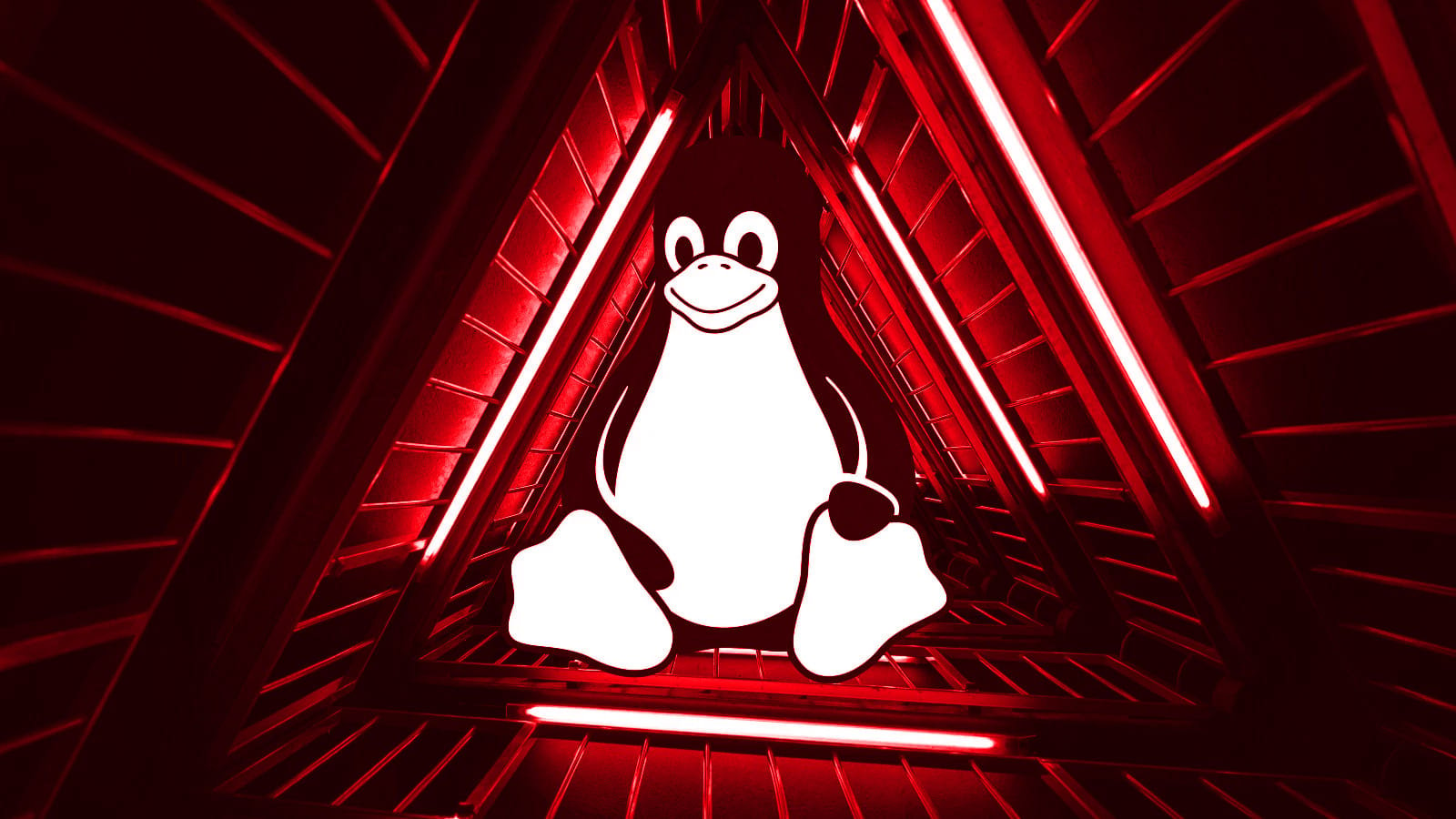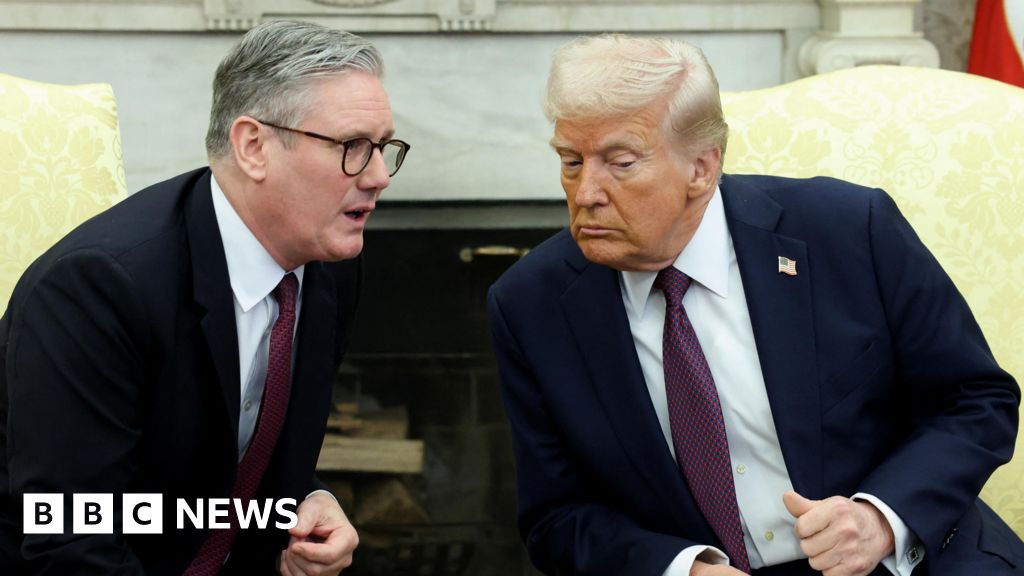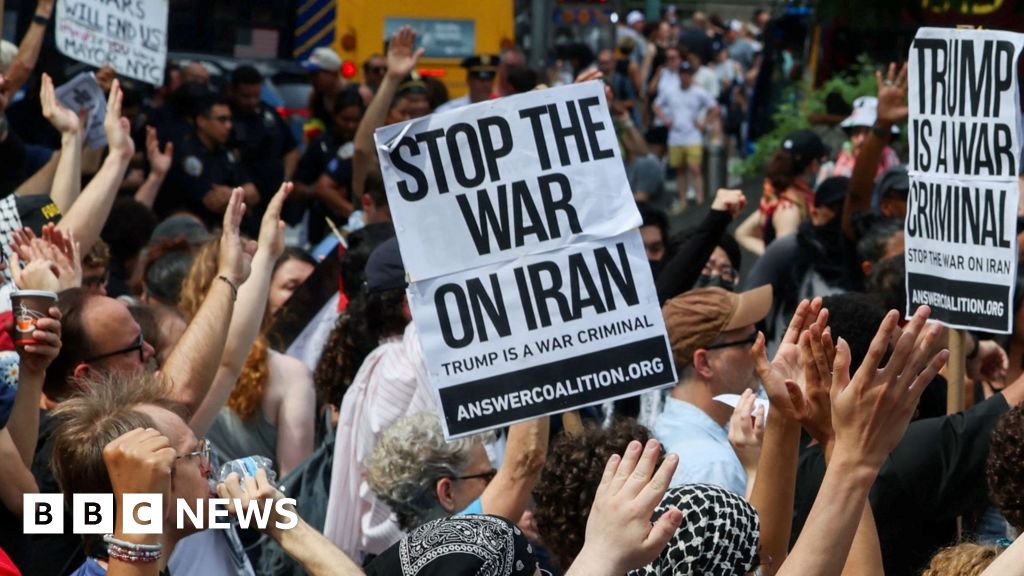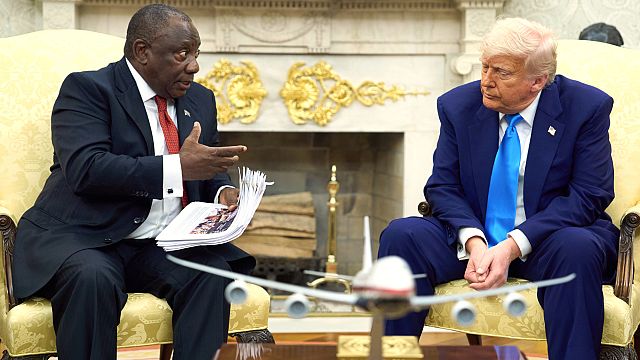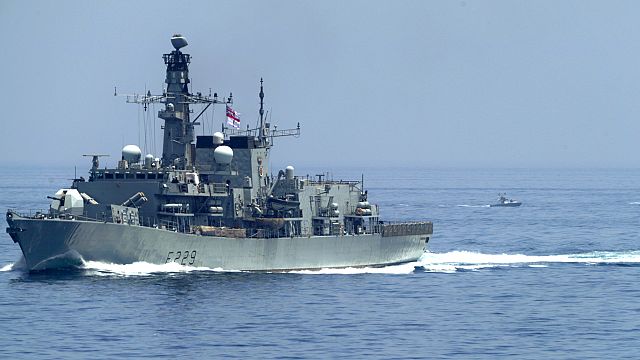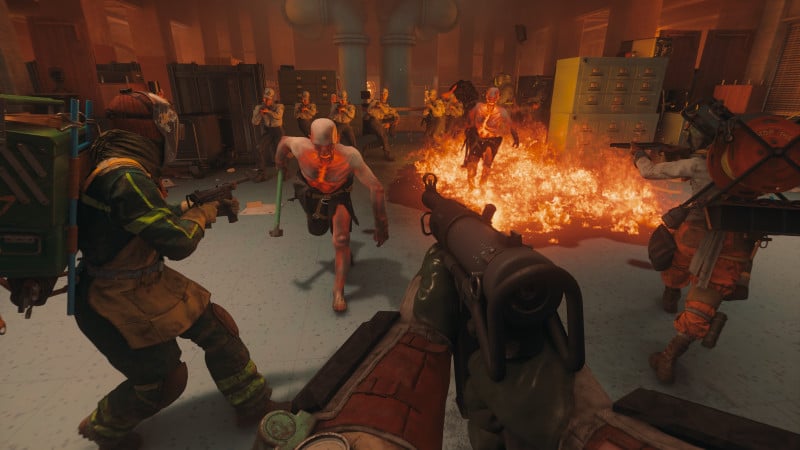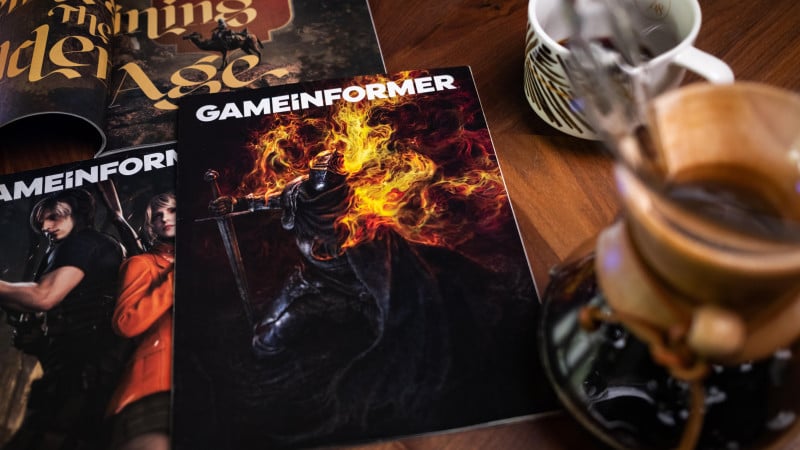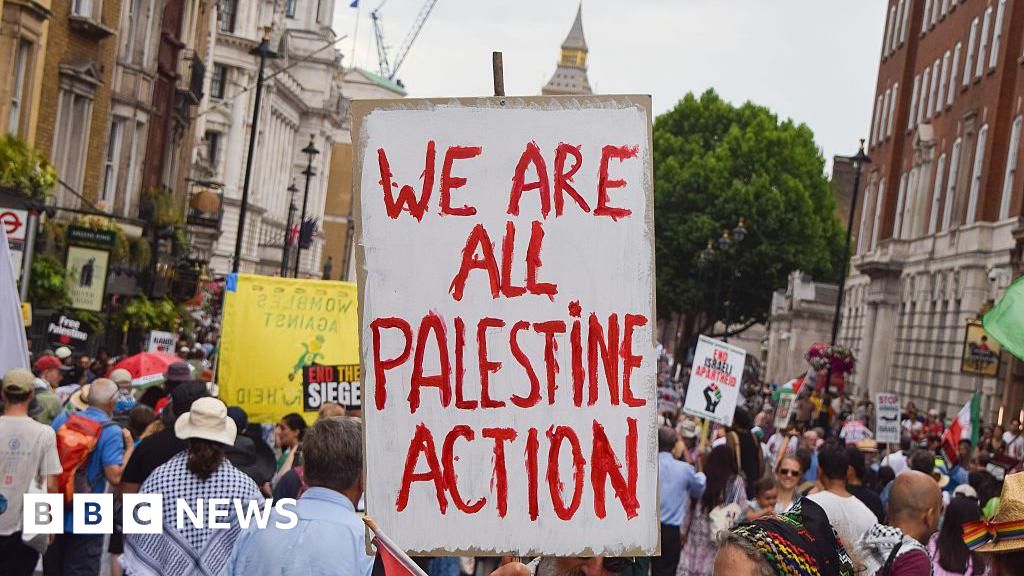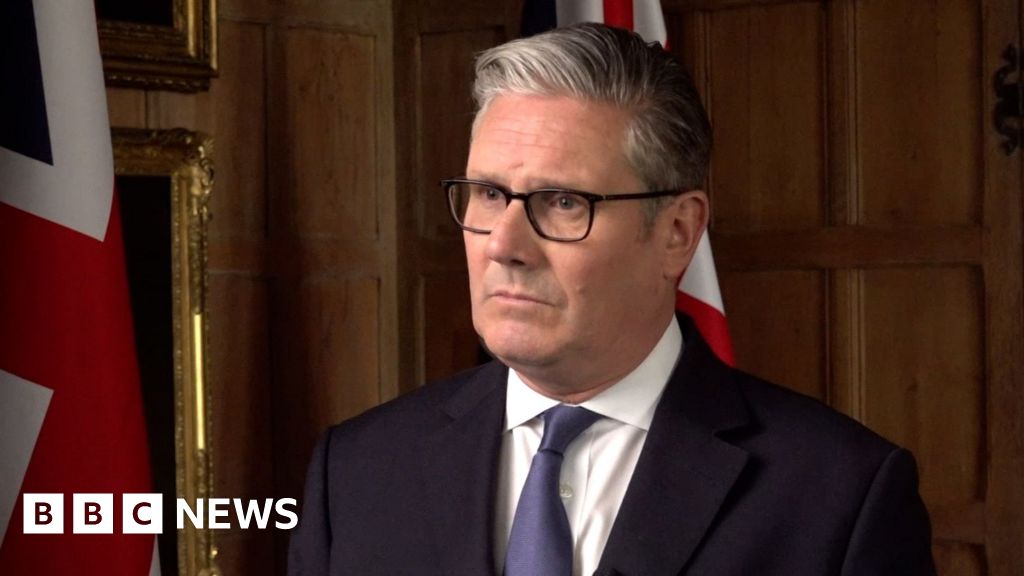How Trump Decided to Strike Iran

Standing at the lectern in the White House briefing room on Thursday afternoon, Karoline Leavitt, the White House press secretary, read a message she said came “directly from the president.”
Because of the “substantial chance of negotiations” with Iran that could bring the United States back from the brink of jumping into the war in the Middle East, President Trump’s statement said, he would make a decision about whether or not to strike Iran “within the next two weeks.”
Mr. Trump had been under pressure from the noninterventionist wing of his party to stay out of the conflict, and was having lunch that day with one of the most outspoken opponents of a bombing campaign, Stephen K. Bannon, fueling speculation that he might hold off.
It was almost entirely a deception. Mr. Trump had all but made up his mind to bomb Iran’s nuclear facilities, and the military preparations were well underway for the complex attack. Less than 30 hours after Ms. Leavitt relayed his statement, he would give the order for an assault that put the United States in the middle of the latest conflict to break out in one of the world’s most volatile regions.
Mr. Trump’s “two weeks” statement was just one aspect of a broader effort at political and military misdirection that took place over eight chaotic days, from the first Israeli strikes against Iran to the moment when a fleet of B-2 stealth bombers took off from Missouri for the first American military strikes inside Iran since that country’s theocratic revolution in 1979.

Interviews with administration officials, Trump allies and advisers, Pentagon officials and others familiar with the events show how, during this period, different factions of Mr. Trump’s allies jockeyed to win over a president who was listing in all directions over whether to choose war, diplomacy or some combination.
Outsiders tried to divine which faction was ascendant based on whom Mr. Trump met with at any given time. Mr. Trump seemed almost gleeful in telling reporters that he could make a decision “one second before it’s due, because things change, especially with war.”
All the while, Mr. Trump was making blustery statements indicating he was about to take the country into the conflict. “Everyone should evacuate Tehran!” he wrote on Monday last week on Truth Social, the social media platform he owns. The following day, he posted that he had not left a meeting of the Group of 7 in Canada to broker a Middle East cease-fire but for something “much bigger.”
So, he told the world, “Stay tuned!”
These public pronouncements generated angst at the Pentagon and U.S. Central Command, where military planners began to worry that Mr. Trump was giving Iran too much warning about an impending strike.
They built their own deception into the attack plan: a second group of B-2 bombers that would leave Missouri and head west over the Pacific Ocean in a way that flight trackers would be able to monitor on Saturday. That left a misimpression, for many observers and presumably Iran, about the timing and path of the attack, which would come from another direction entirely.
The strike plan was largely in place when Mr. Trump issued his Thursday statement about how he might take up to two weeks to decide to go to war with Iran. Refueling tankers and fighter jets had been moved into position, and the military was working on providing additional protection for American forces stationed in the region.
While the “two weeks” statement bought the president more time for last-minute diplomacy, military officials said that ruse and the head fake with the B-2s also had the effect of cleaning up a mess — the telegraphing of the attack — that was partly of the president’s making.
Asked to comment on the details of this article, Ms. Leavitt said the president and his team “successfully accomplished one of the most complex and historic military operations of all time” regarding Iran’s nuclear sites. She added that “many presidents have talked about this, but only President Trump had the guts to do it.”
A Shifting Tune
Mr. Trump had spent the early months of his administration warning Prime Minister Benjamin Netanyahu of Israel against a strike on Iran. But by the morning of Friday, June 13, hours after the first Israeli attacks, Mr. Trump had changed his tune.
He marveled to advisers about what he said was a brilliant Israeli military operation, which involved a series of precision strikes that killed key figures in Iran’s military leadership and blasted away strategic weapons sites. Mr. Trump took calls on his cellphone from reporters and began hailing the operation as “excellent” and “very successful” and hinting that he had much more to do with it than people realized.
Later that day, Mr. Trump asked an ally how the Israeli strikes were “playing.” He said that “everyone” was telling him he needed to get more involved, including potentially dropping 30,000-pound GBU-57 bombs on Fordo, the Iranian uranium-enrichment facility buried underneath a mountain south of Tehran.
The next day, the president told another adviser he was leaning toward using those “bunker buster” bombs on Fordo, while taking pride in both the bomb’s destructive power and the fact that the United States is the only country that has the bomb in its arsenal. The adviser left the conversation convinced that Mr. Trump had already decided to bomb Iran’s nuclear sites.
At the same time, the president’s team was closely monitoring how their most prominent supporters were reacting on social media and on television to the prospect of the United States joining the war in a more visible way.
They paid close attention to the statements of Tucker Carlson, the influential podcaster and former Fox News host, who was vehemently opposed to the United States joining Israel in taking on Iran. Mr. Trump became infuriated by some of Mr. Carlson’s commentary and started complaining about him publicly and privately.
Political advisers to Mr. Trump had been swapping notes on various public and private polls examining the popularity of military action against Iran, noting that American support for an operation depended in part on how pollsters asked the question. While polls showed that an overwhelming majority of Americans did not want the United States to go to war with Iran, most Americans also did not want Iran to obtain a nuclear weapon.
The president was closely monitoring Fox News, which was airing wall-to-wall praise of Israel’s military operation and featuring guests urging Mr. Trump to get more involved. Several Trump advisers lamented the fact that Mr. Carlson was no longer on Fox, which meant that Mr. Trump was not hearing much of the other side of the debate.
Deliberations among administration officials about a possible American strike on Iran were in full swing by Sunday night, June 15, when Mr. Trump left for Canada for the Group of 7 meeting. Mr. Trump seemed to his advisers to be inching closer to approving a strike, even as he told them that Israel would be foolish to try to assassinate Ayatollah Ali Khamenei, Iran’s supreme leader.
Moreover, he said, if the United States were to strike Iran, the goal should be to decimate its nuclear facilities, not to bring down its government.
The ‘Biggest Threat to Opsec’
By then, a small group of top military officials at the Pentagon and U.S. Central Command in Tampa had already begun refining attack plans on the Fordo facility and other Iranian nuclear sites that military planners had drawn up years ago.
The planning was led by Gen. Michael Erik Kurilla, the Centcom commander, and Gen. Dan Caine, the chairman of the Joint Chiefs.
B-2 stealth bombers, based at Whiteman Air Base in Missouri, are the only warplanes capable of delivering the GBU-57 bombs without detection by Iranian radar. B-2 bomber pilots have done extensive rehearsals for extended-range missions like the one before them — crossing the Atlantic Ocean and the Mediterranean Sea, refueling multiple times before syncing up with fighter jets for the final flight leg into Iran.
But even as the military planning was being conducted in secrecy, each of Mr. Trump’s social media posts seemed to be telling the world what was coming.
The president, said one military official, was the “biggest threat to opsec,” or operational security, that the planning faced.
To build confusion into the attack plan, military officials decided to have two groups of B-2 bombers leave Missouri around the same time. One group would fly westbound, toward Guam, with transponders on that could be tracked by commercial satellite companies. Another group of seven bombers, carrying a full payload of bombs and with their transponders off, flew east toward Iran, undetected.
During a news conference on Sunday, hours after the American strike, General Caine called the Guam feint a “decoy.”
Shaping the Conversation
By Tuesday, June 17, Mr. Trump had largely made up his mind to strike Iran. But he took his coercive diplomacy to a new level, issuing menacing threats over social media.
“We now have complete and total control of the skies over Iran,” he posted on Truth Social, adding, “We know exactly where the so-called ‘Supreme Leader’ is hiding. He is an easy target, but is safe there — We are not going to take him out (kill!), at least not for now.” He demanded, in all-caps, “UNCONDITIONAL SURRENDER!”
By this point, several people in the anti-interventionist camp of Mr. Trump’s advisers realized they most likely could not prevent the president from hitting the Iranian nuclear facilities. So, they turned their focus on trying to ensure the American war did not spiral into an expansive “regime change” war.
That day, June 17, Vice President JD Vance posted a long series of posts on social media that many within the anti-interventionist camp interpreted as him seeding the ground for a potential U.S. military operation and preemptively defending the president’s likely decision.
“He may decide he needs to take further action to end Iranian enrichment. That decision ultimately belongs to the president,” Mr. Vance wrote in the widely shared post. “And of course, people are right to be worried about foreign entanglement after the last 25 years of idiotic foreign policy. But I believe the president has earned some trust on this issue.”
Prominent activists began working to shape the conversation for what was likely to come after the bombing: a debate about whether or not to engage in a war intended to bring about new leadership in Iran.
“Regime change has quickly become the newly stated goal of this operation,” wrote the influential activist Charlie Kirk, in a social media post two days before the U.S. strikes. “America should learn its lesson and not involve itself in a regime change war.”
Even as Mr. Trump was posting his own hawkish statements, he was becoming annoyed as he watched pundits on television telegraph his likely strike against Fordo. He was infuriated when The Wall Street Journal reported that he had already given a green light to putting the pieces of the operation in place but had not given the final order.
On Thursday, Mr. Trump was joined for lunch at the White House by Mr. Bannon, one of the most prominent critics of U.S. involvement in Israel’s war with Iran. Some wishful thinkers in the anti-interventionist camp interpreted the meeting as a sign that Mr. Trump was getting cold feet.
Ms. Leavitt reinforced that sentiment when she delivered Mr. Trump’s statement, not long after Mr. Bannon arrived at the White House, indicating that he had given himself up to two weeks to make a decision, a time frame he often invoked for decisions on complex issues when he had no clear plan.
But Mr. Trump had already dictated Ms. Leavitt’s statement before he met with Mr. Bannon. It was a calculated misdirection intended to buy some breathing room for the president while suggesting that no attack was imminent.
Up through that point, Mr. Trump had been willing to continue to listen to those skeptical about the Iran strike, and to hear arguments about its possibly dire consequences — including for oil prices, civil war in Iran and a possible refugee crisis, in addition to the prospect of retaliatory attacks that could bring the United States into a sustained conflict.
On Friday, Mr. Trump left the White House in the afternoon for a fund-raising event at his club in Bedminster, N.J., his main summer retreat, further feeding the impression that no attack was imminent.
But within hours, around 5 p.m. on Friday, Mr. Trump ordered the military to begin its Iran mission. Given the 18 hours it would take the B-2s to fly from Missouri to Iran, he knew he still had many more hours to change his mind, as he did at the last minute in 2019, when he ordered airstrikes against Iranian targets and then aborted them.
But few in his administration believed he would pull back this time.
A One-Off, or Not
A complex and highly synchronized military operation began. Many hours after the two fleets of B-2s took off in opposite directions, the bombers bound for Iran joined up with fighter jets and flew into Iranian airspace.
American submarines launched 30 Tomahawk cruise missiles on the nuclear facilities in Natanz and Isfahan.
As the planes approached Fordo and Natanz, the fighter jets swept in front of the bombers and fired strikes meant to suppress any surface-to-air missiles that Iran might muster, General Caine said in the Pentagon briefing on Sunday.
At 2:10 a.m. Sunday morning Iran time, the lead bomber dropped two of the GBU-57 bombs on the Fordo site, buried deep under a mountainside and hundreds of feet of concrete. By the end of the mission, 14 of the “bunker buster” bombs had been dropped, the first time they had ever been used in combat.
Pentagon officials said Sunday that the American bombers and jet fighters never encountered any enemy fire.
Hours after the American aircraft had departed Iranian airspace, Mr. Trump gave a triumphant speech at the White House saying that the mission had “completely and totally obliterated” Iran’s nuclear capabilities. He suggested that the war could end with this one-off mission if Iran would give up its nuclear program and negotiate.
By Sunday afternoon, however, American officials had tempered the optimism of the night before, saying that Iran’s nuclear facilities might have been severely damaged, but not entirely destroyed.
Mr. Vance acknowledged that there are questions about the whereabouts of Iran’s stock of near-bomb-grade uranium. He and Secretary of State Marco Rubio stressed that a regime change in Tehran — which could mean a protracted U.S. engagement — was not the goal.
But Mr. Trump, whose operation was the subject of praise in news coverage not just from allies but some of his critics, had already moved on, hinting in a Truth Social post that his goals could be shifting.
“It’s not politically correct to use the term, ‘Regime Change,’” he wrote, “but if the current Iranian Regime is unable to MAKE IRAN GREAT AGAIN, why wouldn’t there be a Regime change???”
What's Your Reaction?
 Like
0
Like
0
 Dislike
0
Dislike
0
 Love
0
Love
0
 Funny
0
Funny
0
 Angry
0
Angry
0
 Sad
0
Sad
0
 Wow
0
Wow
0
